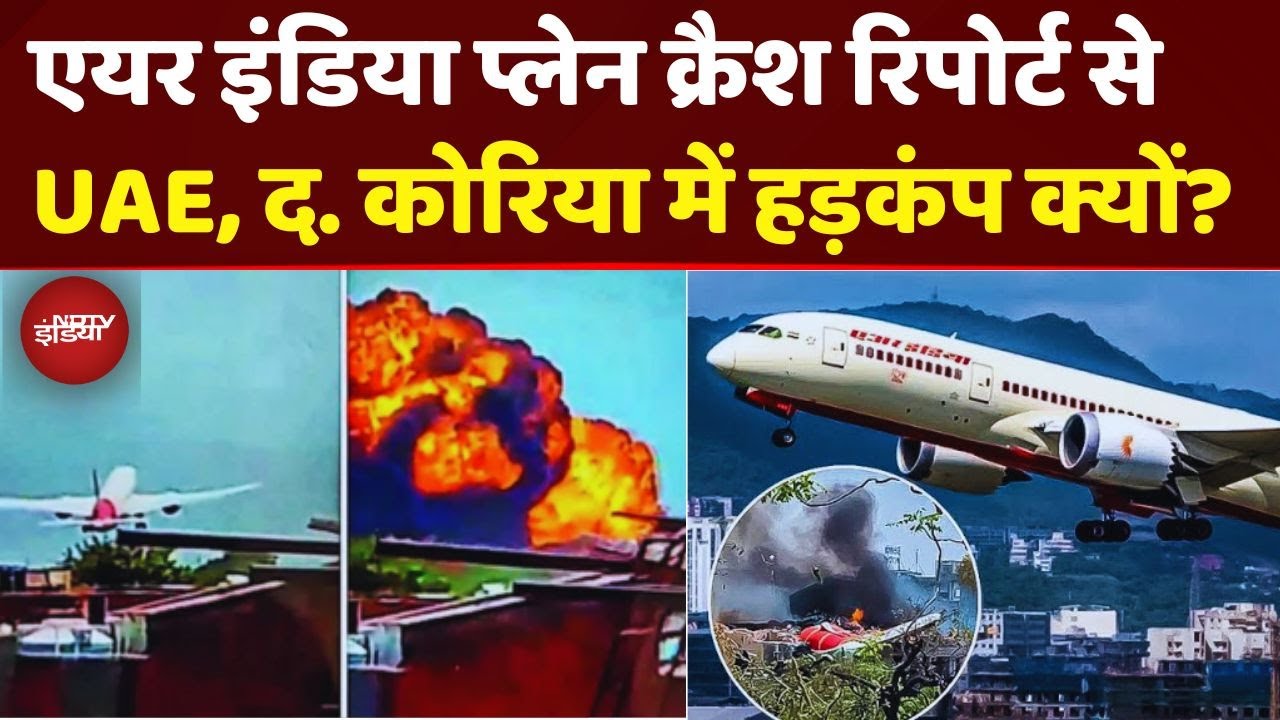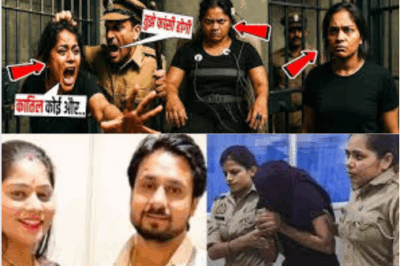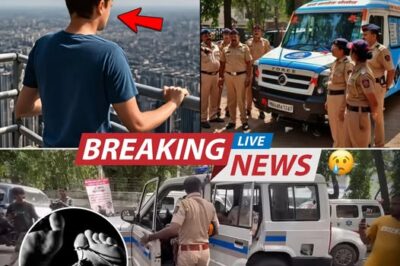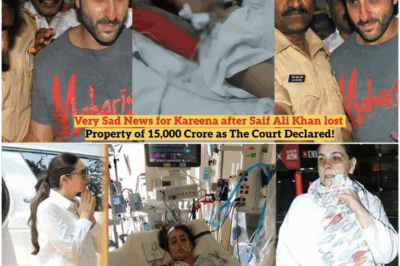Ahmedabad Plane Crash Report Controversy : WSJ report on plane crash, who is responsible?
.
.
.
Ahmedabad Plane Crash Report Controversy: The Wall Street Journal’s Claims, Indian Experts’ Reactions, and the Question of Accountability
The recent crash of an Air India aircraft in Ahmedabad has not only shaken the aviation community but has also ignited a firestorm of controversy, fueled by a damning report from the internationally reputed Wall Street Journal (WSJ). As families mourn the tragedy and the country seeks answers, the spotlight is now trained on who is truly responsible: technical failure, pilot error, or an attempt by powerful interests to scapegoat individuals and shield larger institutions? The debate—marked by leaked cockpit recordings, conflicting official and unofficial narratives, and intervention by global experts—has put transparency, justice, and the safety of Indian air travelers at the forefront.

The Crash and the Wall Street Journal Report
On June 12, a catastrophic crash involving an Air India flight in Ahmedabad cost 270 lives, raising urgent questions about aviation safety and the reliability of Indian investigative agencies. In what quickly became a high-profile international incident, The Wall Street Journal (WSJ)—America’s leading financial newspaper—published a report that has since sent shockwaves across both Indian and global aviation circles.
According to the WSJ, their coverage is based on privileged access to cockpit voice recordings and investigative leaks. One of the central assertions in the WSJ report is that Captain Sumit Sabharwal, a veteran pilot with over 15,000 flight hours, manually cut off the fuel supply to the engines shortly after takeoff, a claim allegedly corroborated by the co-pilot, Clive Kundra, who appeared shocked at the captain’s action.
The report describes a dramatic exchange within the cockpit, where co-pilot Clive Kundra reportedly asked, “Sir, why did you cut off the fuel switch?” followed only by the captain’s silence—a moment described as eerie and significant. The implication, according to the WSJ, was that this manual intervention directly led to the engines shutting down mid-air, precipitating the deadly crash.
Public Outcry and Indian Experts’ Disbelief
The WSJ’s claims immediately sparked intense debate in India. Aviation experts, pilot associations, and public commentators questioned the plausibility of the story and criticized the unprecedented influence of a foreign media outlet over such a sensitive investigation.
A central point of contention is whether any newspaper—even one as respected as the WSJ—could have access to more information than the Indian government’s own investigating agencies, such as the Aircraft Accident Investigation Bureau (AAIB). Could the media really possess details which even the Indian Parliament or Ministry of Civil Aviation has not publicly acknowledged?
Experts such as Sanjay Lajer, a well-known Indian aviation analyst, raised the alarm soon after the WSJ’s report was published. Lajer openly questioned the transparency and impartiality of the investigation, urging that only a judicial inquiry conducted by a single sitting High Court judge could restore faith in the process and ensure accountability, not just for the loss of 270 lives but for the safety of millions who fly regularly in India.
Is the Narrative Being Manipulated?
What disturbed the expert community most was the possibility that the narrative was being manipulated to pin the blame squarely on the Indian pilots, while shielding large corporate stakeholders, including the aircraft manufacturer, Boeing. The Indian Federation of Pilots (FIP) issued statements insisting that pilots were being “maliciously targeted” and scapegoated to protect multi-billion-dollar interests.

The question arises: Who stands to gain from blaming the pilots? With a global company like Boeing at the centre of the storm, and its brand reputation and billions in business at stake, there is a legitimate fear that investigators—or those with a vested interest in the outcome—may be seeking a convenient scapegoat. Given the value of the aviation industry, is it easier to blame individual pilots than to admit to systemic technical faults or design failures?
The Cockpit Voice Recorder Mystery
Central to both the WSJ’s claims and the Indian government’s response is the disputed cockpit voice recording (CVR). According to the Indian Preliminary AAIB report, the aircraft’s “fuel switches suddenly went from run to cut-off position,” resulting in the catastrophic loss of both engines. However, unlike the WSJ report, the AAIB report does not explicitly state how or why the switches were moved, nor does it directly attribute the act to either pilot.
WSJ claims their version is based on voice recordings that appear to incriminate Captain Sabharwal, though many experts and foreign aviation consultants remain skeptical unless the entire voice recording is made public. Indian aviation experts argue that real transparency can only be achieved by releasing the full CVR; until then, they say, incomplete leaks and selective transcripts only serve to muddy the waters.
Sanjay Lajer adds, “Without the full cockpit voice recording, the true sequence of events can never be understood. If the evidence was so clear-cut and actionable, wouldn’t the authorities have acted already?” He also points out that if this accident had occurred in the US, a criminal investigation would have automatically been launched, hinting at discrepancies in investigative standards between countries.
Technical Versus Human Error: The Debate Deepens
Another layer of complexity is added by technical experts weighing in on the design of aircraft systems. International aviation safety specialist Melissa Chen, based in the US, has stated that the controversial “fuel switch” is heavily guarded and cannot be easily or accidentally moved. She explained, “These aren’t simple toggle switches. You have to pull them out and then move them—mistakenly switching them off is virtually impossible, particularly for pilots with thousands of hours of flight experience.”
Mark D. Martin, another respected aviation safety analyst from India, believes that a simultaneous shutdown of both fuel switches, immediately after takeoff, points to a technical or systemic failure rather than pilot error. He called for a comprehensive review of the Boeing 787’s systems, arguing that the scenario described by the WSJ “simply does not fit the standard patterns of pilot error.” Similarly, an Australian aviation consultant commented that he had “never heard of a pilot intentionally cutting off fuel supply during takeoff, especially to both engines.”
Pilot Reputation and National Sentiment
Beyond the technical debate, the controversy has taken on a nationalistic undertone, especially as the Indian Federation of Pilots (FIP) expresses concern that the professional integrity of Indian pilots is being unfairly impugned. In a strongly-worded open letter, the FIP condemned what it called the “systematic vilification of Indian pilots” and urged authorities not to bow to outside pressure or selective leaks.
Both Captain Sabharwal and co-pilot Kundra are experienced and respected professionals—raising additional questions about the narrative of gross negligence. With no evidence of financial distress, disruptive personal lives, or previous professional complaints, the suggestion that one or both pilots would deliberately or carelessly endanger so many lives is, in the eyes of many, deeply implausible.
Call for Judicial Inquiry and Complete Transparency
In the wake of mounting pressure, voices from across the aviation industry, public policy, and ordinary citizens are calling for transparency: release the complete cockpit voice recordings, conduct a judicial inquiry independent of industry pressures, and guarantee that truth—and not expediency or financial interest—guides the outcome.
Numerous experts believe that only a High Court or Supreme Court judge can be trusted to oversee such a sensitive investigation, guaranteeing independence from executive or commercial interference. The principles at stake are not only justice for the victims and their families but also the safety of every air traveler in India. Given how often Indians now travel by air, the integrity of the process is a matter of national significance.
Conclusion
The controversy surrounding the Ahmedabad plane crash, intensified by the WSJ report, is emblematic of the broader issues facing Indian public institutions: questions of transparency, sovereignty, and accountability are at the fore. As more details emerge, and as the debate grows more heated, the nation is faced with hard questions:
Who should the public believe: leaks from foreign media, or the careful, if sometimes sluggish, official investigations?
Are the lives and reputations of Indian pilots being jeopardized to protect powerful corporate interests?
Can the government ensure a truly independent, impartial inquiry?
Most importantly, can the families of the victims—and the millions who fly every year—trust that their safety is the real priority?
As ball remains firmly in the court of the Indian government, especially Prime Minister Narendra Modi, the world waits to see whether India will rise to the occasion, putting transparency and truth above all, or whether convenient scapegoats will once again be found to absorb blame. The eyes of the nation, and indeed the world, now look for answers, not accusations.
play video:
News
Kareena’s Son Ibrahim Ali Khan looks unrecognizable after his shocking weight Loss & Transformation?
Kareena’s Son Ibrahim Ali Khan looks unrecognizable after his shocking weight Loss & Transformation? The world of Bollywood is no…
Sonam’s terrifying appearance in jail, Narco test made everyone’s head spin! Sonam – Raja Raghuva…
Sonam’s terrifying appearance in jail, Narco test made everyone’s head spin! Sonam – Raja Raghuva… Ever since Sonam Raghuwanshi has…
Muskan Malik Discharged From Hospital and her Cute 2nd Baby Girl with Rehman Malik
Muskan Malik Discharged From Hospital and her Cute 2nd Baby Girl with Rehman Malik Muskkaan Malik, the popular YouTuber, has…
A Mother’s Grief: The Tragic Loss of a TV Actress’s Only Son After a Tuition Argument
A Mother’s Grief: The Tragic Loss of a TV Actress’s Only Son After a Tuition Argument A Shocking Tragedy in…
Very Sad News for Kareena after Saif Ali Khan lost Property of 15,000 Crore as The Court Declared!
Very Sad News for Kareena after Saif Ali Khan lost Property of 15,000 Crore as The Court Declared! . ….
Big bad news about Bharti Singh, Kapil is crying badly! Bharti Singh admitted to hospital
Big bad news about Bharti Singh, Kapil is crying badly! Bharti Singh admitted to hospital. . . . Shock and…
End of content
No more pages to load










